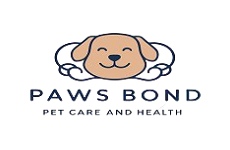Expert opinions on whether dogs can safely eat Reese’s Pieces are provided below. Although Reese’s Pieces are safe for dogs to consume, it is not advised to give them as a frequent treat. They are high in sugar and fat, and if ingested in excess, can cause obesity, dental problems, and upset stomachs in dogs. Furthermore, chocolate—which contains theobromine, which is harmful to dogs—may be an ingredient in Reese’s Pieces. Reese’s Pieces or any other human food should never be given to a dog without first seeing a veterinarian because every dog is different in terms of tolerance and how they react to different foods. Generally speaking, it’s safer to give your dog dog-safe treats instead of human goodies, especially those
Are Reese’s Pieces Safe for Dogs to Eat?
In general, it is deemed safe for dogs to consume Reese’s Pieces in moderation. But if ingested in excess, their high sugar and fat content can cause unsettled stomachs and obesity. Furthermore, chocolate—which contains theobromine, which is harmful to dogs—may be an ingredient in Reese’s Pieces. It’s crucial to keep in mind that each dog is unique and that some may be allergic to or sensitive to particular components. Reese’s Pieces should only be occasionally and moderately fed to dogs, just like any other human food. Before adding new items to your dog’s diet, it is best to speak with your veterinarian.
Are Peanuts in Reese’s Pieces Safe for Dogs to Consume?
Yes, dogs can safely eat the peanuts found in Reese’s Pieces in general. In addition to being a good source of protein and good fats, peanuts themselves are not hazardous to dogs. But it’s important to take into account that Reese’s Pieces contain other elements that could not be good for dogs, like chocolate and a high sugar level. It’s also important to keep an eye out for any negative responses your dog may have after eating Reese’s Pieces or any other food containing peanuts, as some dogs may have allergies or sensitivity to peanuts. As usual, the key to giving any human food to dogs is moderation.
What if my dog eats a lot of Reese’s Pieces?
Reese’s Pieces consumption by dogs can result in a number of health problems. High levels of sugar and fat in Reese’s Pieces can upset your dog’s stomach and result in vomiting or diarrhea. Furthermore, chocolate—which is bad for dogs and can cause symptoms like restlessness, increased thirst, rapid breathing, and in extreme cases, seizures—may be present in Reese’s Pieces. It’s critical to keep a close eye on your dog and to get in touch with your veterinarian if you see any strange symptoms. Reese’s Pieces and other human delicacies should always be kept out of your dog’s reach to avoid accidental intake and other health hazards.
Is It Safe for Dogs to Eat Reese’s Pieces? Here’s the Reality
Do dogs have permission to eat Reese’s Pieces? Now let’s find out the truth! Although Reese’s Pieces don’t poison dogs, it’s not a good idea to give them as a frequent treat because of their high fat and sugar content, which can cause obesity and digestive problems. Reese’s Pieces may also include chocolate, which is poisonous to dogs. Chocolate consumption can cause a number of symptoms, such as diarrhea, vomiting, and even convulsions. Even if giving your dog Reese’s Pieces in moderation might not be harmful, it’s advised to avoid doing so. Prioritize treats that are safe for dogs at all times, and ask your veterinarian for advice on healthy snacks for your pet.
What Exactly Are Reese’s Pieces?
What precisely are Reese’s Pieces? Reese’s Pieces are little candies with peanut butter flavoring and a coating. They resemble chocolate candy in appearance, but within is a creamy, sweet peanut butter center. Each piece has a soft peanut butter filling within and a crunchy exterior shell that is usually colored orange, yellow, or brown. The Hershey Company first introduced Reese’s Pieces in the late 1970s, and their distinctive flavor combination rapidly made them popular. They are frequently eaten as a sugary snack or as a garnish for baked goods or ice cream desserts. Even though Reese’s Pieces were created with human consumption in mind, some dog owners may be unsure about it being safe to feed their pets.
The constituents in Reese’s Pieces
Peanut butter:
supplies the smooth filling that is inside each slice.
Sugar:
Enhances the sweetness of the peanut butter filling and candy-coated shell.
Partially defatted peanuts:
Adds to the peanut butter filling’s flavor and texture.
Partially hydrogenated vegetable oil:
contributes to the candy’s silky smoothness and helps bind the ingredients together.
Corn syrup:
Serves the candy shell’s binder and sweetening purpose.
Dextrose:
An additional sweetener was added to the candy coating.
Salt:
Enhances the peanut butter filling’s taste characteristics.
Resinous glaze:
provides the candy shell with a glossy sheen.
The unique flavor and texture of Reese’s Pieces are produced by the combination of these components
Can dogs safely eat Reese’s Pieces?
Can dogs have Reese’s Pieces without risk? Although it is theoretically feasible, it is not advised for dogs to eat Reese’s Pieces. Dog obesity and other health problems might result from the high sugar and fat content of these treats. Furthermore, chocolate—which is toxic to dogs and can result in symptoms like vomiting, diarrhea, and even seizures—may be present in Reese’s Pieces. To protect dogs’ health and wellbeing, it’s best to steer clear of giving them Reese’s Pieces or any other human candy completely. Instead, give them snacks that are healthy for dogs. It is always advisable to speak with a veterinarian before giving your dog any new food.
What is the maximum number of Reese’s Pieces a dog can consume?
What is the maximum quantity of Reese’s Pieces that a dog can eat without risk? Though the precise quantity is unknown, it’s crucial to keep in mind that Reese’s Pieces are not meant for dog eating and ought not to be given as a frequent treat. If dogs eat these candies in excess, their high sugar and fat content might cause obesity and other health problems. Furthermore, chocolate—which is toxic to dogs and can result in a variety of symptoms like vomiting, diarrhea, and seizures—may be present in Reese’s Pieces. It’s advisable to give dog-safe treats sparingly and get advice from a veterinarian on appropriate pet snacks.
Alarming Health Symptoms
The following are some concerning signs of health in dogs:
Lethargy: Abnormal fatigue or a lack of energy can be signs of a number of underlying medical conditions, such as organ malfunction or infections.
Vomiting: Severe or prolonged vomiting may indicate harmful drug consumption, nutritional errors, or digestive issues.
Diarrhea: Changes in diet, gastrointestinal issues, or infections can all cause bloody or frequent diarrhea.
Difficulty Breathing: Breathing too quickly or laboriously may indicate heatstroke, cardiac problems, or respiratory disorders.
Excessive Thirst: An increase in water intake could be a sign of hormonal abnormalities, diabetes, or kidney disease..
Seizures: Convulsions or uncontrollably twitching muscles could be signs of neurological conditions, poisoning, or epilepsy.
Pale Gums: Unusual pale gums may indicate circulation issues, internal bleeding, or anemia.
Collapse: Abrupt weakness or collapse could indicate heatstroke, heart issues, or shock.
For your dog’s wellbeing, it is imperative that you seek prompt veterinary care in order to determine and treat the underlying cause of these symptoms.
Conclusion
It is critical to maintain dogs’ wellbeing to identify and address concerning health problems in them. Concerning symptoms include lethargy, vomiting, diarrhea, breathing difficulties, increased thirst, seizures, pale gums, and collapse. All of them need to be seen by a veterinarian right away. Pet owners may help guarantee that their dogs receive the care they need to recover from illness or injury and have happy, healthy lives by being watchful and seeking prompt medical intervention when necessary. In addition to a balanced food, sufficient exercise, and a secure environment, regular veterinary examinations are crucial for maintaining the general health of dogs and halting the onset of more serious condition










